Level of surfing
Advanced
Quality of surf
Average
Net code
aq
Area
14000000
Coastline
17,968 km
Climate
Extreme Polar
Hazards
Very Isolated, Extreme Cold, Severe Storms, Difficult Access
Best Months
December - February
Population
1000
Time Zone
ZULU (UTC) to MIKE/YANKEE (UTC+/-12)
Special Requirements
Special Pass / Permits, Non tourist Friendly
introduction
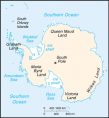
Map of Antartica - the last unclaimed land on Earth
Antartica, surfing and mankinds final frontier of discovery. This is a land of extremes – the coldest place on Earth. Several surfing expeditions have been mounted around the continent and surrounding islands with mixed results.
The potential is all there from stunning points through to perfect rock / reef formations but the sheer cost of planning and executing a mission that may be dashed at any stage by the most unpredictable weather systems on the earth have prevented widespread surfing exploration. Further hampening efforts are the periods of useable sunlight throughout the year.
The continent lies on total darkness for 3 months of the year during the deep winter (June-August) with twilight periods only for months either side. This leaves a window of 6 months where you will even encounter sufficient light to surf.
Antartica is where waves are born, the low pressure systems of the extreme south start at around 60 degrees south and courtesy of the Antartic Circumpolar Current are free to travel unhindered right around Antartica – wedging their way through Drake’s passage between a narrow 500 mile gap with south America to the North and Grahams Land on the Antartic mainland to the south.
Some of the largest swells and waves ever recorded occur here, often reachinbg theoretical maximums in terms of wave theory and mechanics. 10 metre swells are common with extremes bordering on twice that. Much of Antartica lies further south than the 60 degree line and actually see minimal sustained swell activity. Hence it is the area of Graham’s Land to the south of Drake’s passage and the islands of the South Shetlands scattered around the strait that are of prime interest to the surfer.
history
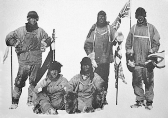
Scotts Expedition - Wilson, Scott and Oates (standing) Bowers,Evans (sitting); January 18, 1912
Antartica has never known widespread human settlement. The continent broke from Australia around 40 million years ago, taking it’s unique marsupial population with it for the long drift south. The Drake passage was not yet open and hence the continent harboured a sub tropical forest. Once the passage opened, Antartica became truly isolated. The Antartic Circumpolar current became established which served to snap freeze the entire continent.
Today 98% of the continent is covered in ice. In more recent times, Antartica was first sighted by whalers heading further and further south in pursuit of dwindling whale numbers in the early 1800’s. Various expeditions were launched by the United States, Great Britain and Norway in the race to reach the South Pole. Norway was to eventually win the race in 1911. The ill fated British team led by Scott was to perish on the return journey. One of the members famously left the expedition’s tent with the words “I am just going outside and may be some time”, this was on the morning of his 32nd birthday – his body has never been found. During the1920’s and beyond, several countries have made claim to areas of Antartica.
Presently France, Chile, Argentina, Australia, The United Kingdom, Norway and New Zealand all claim areas of the continent with Australia’s claim of 49% being the largest. Brazil has claimed an area of the continent but this is yet to be recognised internationally. Other countries including Russia and China operate small research bases on the continent also. New Swabia was an area on Antartica briefly claimed by Nazi Germany.
The claim became defunct in 1945 with the fall of that regime. Further claims have been ignored internationally which still leaves around 20% of the continent unclaimed by any nation – the only remaining land on the Earth not yet claimed by another country. Fortunately, the Antartic Treaty has prevented the exploitation of the continents significant hydrocarbon and mineral reserves. Tourism has increased significantly during the summer months but overall numbers are strictly controlled.
surfing
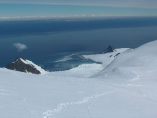
The Bransfield Strait - some of the biggest storms on the planet pass in front of this point
An Antartic surfing trip is not something you would plan lightly. Your best bet would be to secure some work on one of the bases in the South Shetlands and wait until the elements come together – this may take an entire summer.
You will need serious gear For starters you will need a boat, the beaches are treacherously steep and even those with a wave break onto stretches populated with shallow bombies and submerged rocks, the outlying reefs will be your best bet and you don't want to waste your time in water window by paddling any more than you have to. You will need serious rubber 7mm wetsuit with hoods and booties, a drysuit would be better but it will be a pain to surf in.
An experimental internally heated suit is worth considering. Be very aware of the early stages of hypothermia. The only thing that keeps the water down here from freezing is the salinity. Typically it hoers from .03 to 2 degrees throughout the year, the air temperature can be as low as -40. In the deep interior of the continent it can reach as low as -80, basically it's warmer inside your deep freezer at home.
The reefs of Elephant Island offer quality right handers as do most of the Shetlands breaks with a westerly aspect. The prevailing weather is from this direction so be cautious at all times when surfing in exposed locations. You need serious tech backup to provide you with early warning of approaching storms and fronts. If you are still in the water and you can see the front coming it is already too late - prepare for the worst.
travel
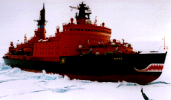
YAMAL - A Russian Nuclear Ice Breaker
Travel to Antartica is expensive. Several tour operators schedule annual voyages to the Graham Land area which has a more temperate climate than the rest of the continent. Hope Bay is the main base on the mainland but several countries operate bases on the South Shetland Islands themselves.
Most tourist cruises depart from either Hobart in Tasmania (Australia) or Southern Chile. Expect to pay around $10,000 per person for a 6 week return trip. During this time you will get maybe 2 weeks on the ice / around the islands. There are a couple of luxury yachts starting to make regular voyages to the area during the summer. Most of them run from Southern Chile – timing the sprint down south across Drakes Passage when the weather is fair to the safety of the South Shetlands.
You will need a reliable boat and knowledgeable captain for this trip, expect to pay around 30-50K for the privlidge.
weather
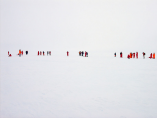
Hannes Grobe - White Out on the Ekstrom Ice Shelf, Antartica; 12 February 2007
The weather here can be treacherous. Katabatic winds reaching 200 mph can arise from the centre of the continent with little warning. The ocean going cruise ships will seek shelter where possible but you could be in for a heavy ride at anchor in these conditions. Bad weather can last for weeks, many Antartic tourist expeditions have returned never having set foot on dry land due as it was far too dangerous to lower a boat.
Often you will be waiting for the swell to recede rather than build. When the swell is about right you will just be wanting the wind to die down, then just when it looks like it is going to come together another enormous low will truck through the area bringing 15 metre seas and 80 knots of onshore wind.
where to stay
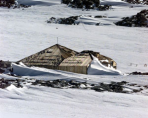
David Killick; Mawson's Hut, Cape Denison, Antartica; Feb 2006
If you have arrived by boat your all set. Other wise you will need to stay at one of the bases on the islands, you should organise this well in advance, you may even have to agree to work there for a period prior to their agreeance. Accomodation is suprisingly good.
All of the bases have basically adopted the technology that has come from the NASA planetary exploration project, airtight bunkers and working areas means that even the most ferocious storm will pass by whilst you remain at a computer controlled 23 degrees. The largest base on the mainland is McMurdo. This US base is enormous, capable of housing over 1200 people at a time. Make sure that if your planning to leave before the winter you book you flight out. After May nothing comes in or out until September - nothing at all.
what to pack
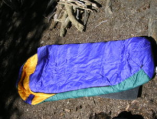
Smack : A mummy bag; 10, August 2006
Get ready or you will suffer! Remember this nice advise when you pack for a journey to Antarctica. Be prepared for all kinds of weather. Basically, the warmer, the better, though temperatures can vary greatly during the day, so bring
also some slightly thinner clothes. Bring
windproof and waterproof clothes, warm jerseys and sturdy walking shoes
for all seasons, as well as warm underwear.
As usual, bring all medical things u need with you and also toiletries. You won't regret a plenty of cold weather gear! Your camera and all the equipment you'd need for it (btw, think of the warm gloves that are easy to photo with), plus a good waterproof bags that will also prevent your gear from getting frozen.
Sunglasses and protective sun lotion are highly recommended. All the gear: a good sleeping bag and tent that are good for very low temp; special gas container u can use for heating food and water; a sturdy backpack or a cargo pack with a good daypack.
And the last thing - it's really up to you, guys - but your skin will dry out from the lack of humidity, so you may want to bring lots of body lotion!






